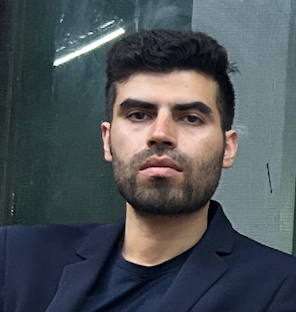Facial expressions are triggered by conscious and unconscious interpretations of events and situations. These interpretations usually happen very quickly and instantaneously so that we only become aware of our own facial expressions once we’ve already made them.
Sometimes we don’t become aware of them at all, even though they’ve been lingering on our face for quite a while.
Something happens in the environment; our mind observes it, interprets it, and reacts to it. The reaction is an emotion and the visible manifestation of this emotion is often a facial expression.
We usually become conscious only at the end of this entire process when we notice a change in our facial expression. At this point, we can consciously choose to manipulate or conceal the facial expression.
Controlling the facial expressions
It’s no secret that some of us are more conscious of our facial expressions than the others. Some of us are highly self-aware and can hijack into this process of triggering a facial expression at an earlier stage.
For example, a person with a high a level of awareness may sometimes be able to change his interpretation of a situation as soon as it starts happening, thereby preventing the emotion and hence the facial expression.
In other words, his consciousness is alert and sharp enough to penetrate the fast process of triggering of facial expression in order to short-circuit the entire process.
Naturally, such people are often very good at controlling their emotions. That is not to say that the less conscious folks among us can’t control their emotions or facial expressions.
People with a relatively low level of awareness usually control their expressions once they’ve already made them because it is at this time only that they become aware of their emotions and facial expressions.
Till then, the entire process of observation, interpretation, and generation of a reaction has already been carried out.
Like I said earlier these interpretations are usually instantaneous. But some events may take longer to interpret- long enough to let us become conscious of the process and therefore interfere with it. In these types of situations, the less conscious people get a chance to control their facial expressions before they make them.
Micro-expressions
Controlling facial expressions after they’ve been triggered often result in slight or subtle facial expressions. These are relatively weaker forms of well-known facial expressions of happiness, sadness, anger, fear, surprise, etc.
At times, controlling facial expressions may result in even subtler facial expressions known as micro-expressions.
Micro-expressions are very brief expressions, typically lasting for only one-fifth of a second. They are barely noticeable and one may need to record and replay in slow motion the speech of a person to detect his micro-expressions.
Common sense says that micro-expressions should be the result of conscious suppression of emotions. That is true, but not always.
The interesting thing about micro-expressions is that they are sometimes the result of unconscious suppression of emotion. What it means is that it is not the person who consciously chooses to suppress his emotions, but it is his unconscious mind that does the job.
In such a case, the unconscious mind of a person observes and interprets an event. Based on the interpretation, it begins to generate a facial expression but then chooses to suppress it.
All this happens outside the person’s awareness and takes just one-fifth of a second or less.
This is, by the way, a strong proof of the fact that our unconscious mind can think independently of our conscious mind.

The exact cause of facial expressions
Facial expressions don’t tell you the exact cause that triggers them. They only tell you how a person feels about a situation and not why he feels that way.
Fortunately, the how usually matters more than the why. Even when you know how a person feels about something by observing their facial expression, you should never jump to conclusions while assigning the reason behind their emotional state.
In order to be a skilled reader of facial expressions, you have to collect as many proofs as you can and test your judgments whenever you can.
Let’s say you rebuke an employee of yours for delaying an important project and notice an angry expression on his face. Though it may be tempting, you shouldn’t assume that the employee’s anger is directed towards you.
He may be angry at himself for not completing the project within the stipulated time. He may be angry at his wife who wasted his time by asking him to accompany her on her shopping trips. He may be angry at his son for mistakenly throwing his project file into the trash.
He may be mad at his dog for defecating on his project file. He may even be angry because he remembered a recent quarrel with his friend that has nothing to do with the project.
The point I’m trying to drive through here is that it’s hard to know what thought caused a particular facial expression because there’s no way you can peek into a person’s mind.
You have to assume possible reasons, then ask questions and carry out tests to single out the reason behind a facial expression.
Fortunately, most situations are much simpler. You shout at someone and they become mad at you. You crack a joke and someone laughs. You tell a piece of bad news and they display a sad expression.
In most cases, it is 1+1 = 2 and you can easily tell why a person made a particular expression.
But in the back of your mind, it is always prudent to remember that in psychology 1+1 doesn’t always equal 2.
